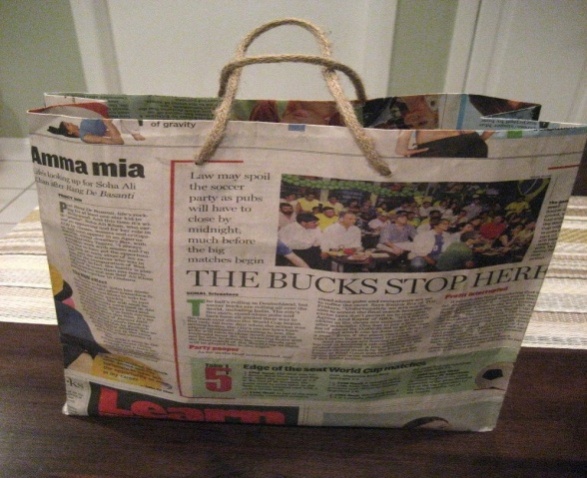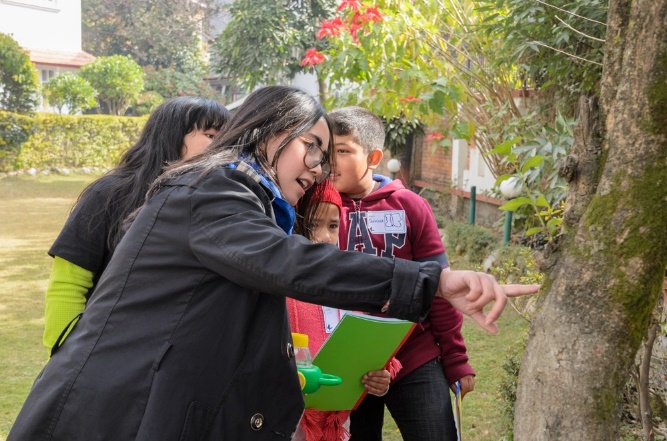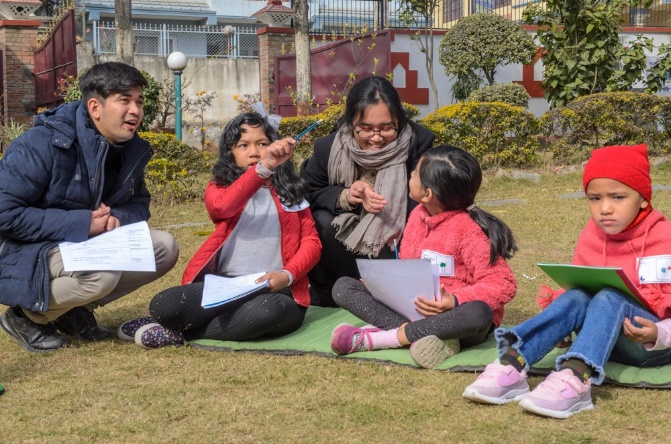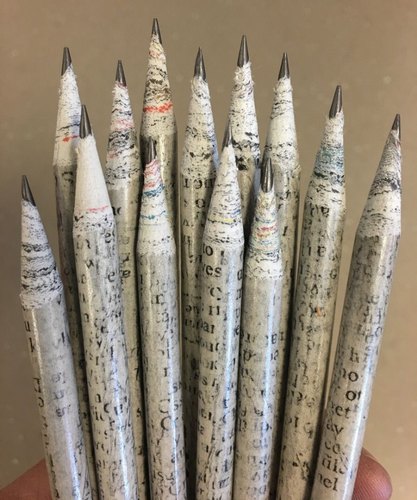D. Be packaging-savvy: There will be tons of occasion in an even where you will dealing with a lot of packaging. Ordering print stock and staitionary from a local supplier, using low-impact materials is good but when it arrives shrink-wrapped into individual bundles, you’ve added non-recyclable plastic waste. Boxes filled with polystyrene packing peanuts have the same problem. Try to cut them out-when you order them in the first place. There are alternatives, like wrapping items in paper belly bands, using recycled paper padding or making paper bags by reusing paper. There may be a small additional effort involved but it will save you from adding to the earth’s landfill. Also gift wrap everything in reused or recycled paper. They really look cool too.
There will be tons of occasion in an even where you will dealing with a lot of packaging. Ordering print stock and staitionary from a local supplier, using low-impact materials is good but when it arrives shrink-wrapped into individual bundles, you’ve added non-recyclable plastic waste. Boxes filled with polystyrene packing peanuts have the same problem. Try to cut them out-when you order them in the first place. There are alternatives, like wrapping items in paper belly bands, using recycled paper padding or making paper bags by reusing paper. There may be a small additional effort involved but it will save you from adding to the earth’s landfill. Also gift wrap everything in reused or recycled paper. They really look cool too.
Well, after all of this planning, it is equally important to have fun and let the participants of the even feel the essence of it all. It will all go to waste if the participants are not aware of all the reasons why these decisions were made for the event. The word must spread and sustainable events must slowly become a norm.
As for us, our Eco-day camp was the first ever children’s day camp that was organized by WCN at our new premises, so the logistics team had make a lot of effort in order to organize a more eco-friendly and sustainable event than ever before. We had to conduct many meetings with the senior management and volunteers to discuss and come up with more ideas. Moreover because Nepal Prakriti Pathshala believes in using in low cost and no cost materials and methodologies in all its approaches, we needed to make sure to keep their costs down and actually save money through sustainable efforts. Every day we realized we faced new challenges but all in all it was a great learning experience and I am happy to say the event was a huge success!
Future events post COVID19:
While we all look forward to more sustainable events, the world is going through a pandemic crises and the world is kind of paralyzed. The COVID19 has really put things into perspective for the entire world and so has it done for our team too. It has somehow given the world a second chance to make things better for the environment. This virus has literally given the 7.8 billion inhabitants of planet earth a second chance to change our old adverse ways, before a greater pandemic that is far worse than COVID19 wreaks havoc on our planet.
Life before COVID19 today seems like it has fell into oblivion. Before, most people seemed to live in their own little bubbles and everyone went about their everyday activities almost incautiously. After this outbreak has hit us, our lives have just changed and most of us feel that we got hit by a train. However the good part about getting hit so hard is that when you fall down you get a chance to get back up and this time we are better and stronger than before.
COVID19 has revealed some real weaknesses in our global supply chain; it has taught us how in the time of crisis we don’t have enough reserves and that has made us more aware about being prepared for future outbreaks and we will be able to identify outbreaks faster, we will be ready to provide care to infected people without having to build new buildings. We will have honest updates so that we won’t have to see crazy rumors spreading on social media. National health authorities will be able to stockpile all the protective equipment and train heath care providers more efficiently. The entire world will be prepared for if there is a next pandemic or something like this.  The ongoing lockdown has unveiled many ideas and issues that should be prioritized while organizing events in the future. Hopefully COVID19 will have made organizations like more mindful. This consciousness will be extremely useful for future planning and this type of awareness will help us as organizers by giving us a foresight to build plans more coherently.
The ongoing lockdown has unveiled many ideas and issues that should be prioritized while organizing events in the future. Hopefully COVID19 will have made organizations like more mindful. This consciousness will be extremely useful for future planning and this type of awareness will help us as organizers by giving us a foresight to build plans more coherently.
Whilst being quarantined, I have been working from home by writing lesson plans that children can do while social distancing. Our entire team is dedicated to coping to help adults and children on how to cope an d even thrive in this difficult time. WCN has posted blogs about social distancing and uploaded green activities which children can do at home at the time of such crisis. Meetings, conferences and seminars are being held online and the lockdown has given us more time to make better plans for future events.
To put it into perspective this outbreak has made us more conscious as an individual and an organizations that much resources can be saved if we meet online as well. But I do stress that so much work online also causes a big carbon footprint (read my colleague's blog on how and ways to make it better http://wcn.org.np/blog/information-technology-data-centers-and-the-changing-environment/5/). However, if anything this outbreak has taught us it is to be more eco-friendly than ever. It has made us think of so many aspects including issues that had not crossed our minds during the last eco-camp event. The outbreak has made us more heedful regarding food crisis and scarcity of essential resources and as a member of the logistics team it has certainly made me more mindful of organizing future events coherently as we hope for the days when we can hold hands without being scared will return and we can plan more events such as our eco day camp! 




 Happily we’re past the days of endless event brochures, paper invitations and leaflets by the dozen. It’s more convenient for a visitor to use the maps app in their phone to find the event than be sent a paper copy of directions. Similarly immediately accessible website also saves reams of unnecessary paper.
Happily we’re past the days of endless event brochures, paper invitations and leaflets by the dozen. It’s more convenient for a visitor to use the maps app in their phone to find the event than be sent a paper copy of directions. Similarly immediately accessible website also saves reams of unnecessary paper. Food and drink can either make or break an event. To make the event viable it is essential to cater for different dietary needs, and it’s always a good idea to plan ahead and include lighter options and a choice range for the guests and participants.
Food and drink can either make or break an event. To make the event viable it is essential to cater for different dietary needs, and it’s always a good idea to plan ahead and include lighter options and a choice range for the guests and participants. All of us still write by hand, so it’s important to focus on how we can put our most soulful thoughts on paper while remaining environmentally friendly.
All of us still write by hand, so it’s important to focus on how we can put our most soulful thoughts on paper while remaining environmentally friendly. There will be tons of occasion in an even where you will dealing with a lot of packaging. Ordering print stock and staitionary from a local supplier, using low-impact materials is good but when it arrives shrink-wrapped into individual bundles, you’ve added non-recyclable plastic waste. Boxes filled with polystyrene packing peanuts have the same problem. Try to cut them out-when you order them in the first place. There are alternatives, like wrapping items in paper belly bands, using recycled paper padding or making paper bags by reusing paper. There may be a small additional effort involved but it will save you from adding to the earth’s landfill. Also gift wrap everything in reused or recycled paper. They really look cool too.
There will be tons of occasion in an even where you will dealing with a lot of packaging. Ordering print stock and staitionary from a local supplier, using low-impact materials is good but when it arrives shrink-wrapped into individual bundles, you’ve added non-recyclable plastic waste. Boxes filled with polystyrene packing peanuts have the same problem. Try to cut them out-when you order them in the first place. There are alternatives, like wrapping items in paper belly bands, using recycled paper padding or making paper bags by reusing paper. There may be a small additional effort involved but it will save you from adding to the earth’s landfill. Also gift wrap everything in reused or recycled paper. They really look cool too. The ongoing lockdown has unveiled many ideas and issues that should be prioritized while organizing events in the future. Hopefully COVID19 will have made organizations like more mindful. This consciousness will be extremely useful for future planning and this type of awareness will help us as organizers by giving us a foresight to build plans more coherently.
The ongoing lockdown has unveiled many ideas and issues that should be prioritized while organizing events in the future. Hopefully COVID19 will have made organizations like more mindful. This consciousness will be extremely useful for future planning and this type of awareness will help us as organizers by giving us a foresight to build plans more coherently.